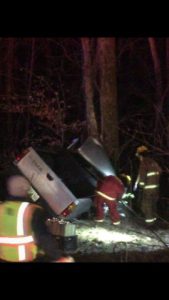News
Qualifying Deadline One Week Away for Many August Elections
March 29, 2018
By: Dwayne Page
Candidates for the Board of Education, Municipal Elections in Smithville, Alexandria, Dowelltown, and Liberty, and for the Tennessee Democratic and Republican Primaries have until noon next Thursday, April 5 to become qualified.
In Smithville, a mayor and two aldermen will be elected on August 2.
The candidates for mayor are Incumbent Jimmy Poss and challenger Josh Miller. Curtis Rust has also obtained a petition to run for mayor but has not yet filed it with the election commission.
Candidates for alderman are Incumbents Jason Murphy and Gayla Hendrix and challenger Brandon Cox.
In Alexandria a mayor and several aldermen are to be elected on August 2.
Doyle Hendrix has obtained a petition for Mayor. Lloyd Dyer will be candidate for Alderman. Bridgette Rogers and Incumbent Eddie Shane Blair have also picked up petitions to run for Alderman in Alexandria.
A mayor and five aldermen will be elected in Liberty on August 2.
The candidates for mayor are Incumbent Dwight Mathis and challenger Darrell Johnson. The alderman candidates are incumbents J.D. Bratten, Eddie Dwayne Blair, and William H. Reynolds along with challenger Derek Johnson. Incumbent Jason Ray has also obtained a petition but has not yet filed it.
Three aldermen will be elected in Dowelltown on August 2. There are currently no candidates yet for the Dowelltown election.
Five school board members will be elected on August 2.
The candidates are incumbent Danny Parkerson in the 1st district; Incumbent Jim Beshearse in the 3rd district, Incumbent Kate Miller in the 4th district, and Incumbent Shaun Tubbs in the 7th district. Incumbent Jerry Wayne Johnson is running for re-election in the 2nd district along with challenger Alan Hayes. Orvil Hendrix and C.D. (Carl) Webb also obtained petitions but have not filed them.
State primary races in August will include State Senator in District 17, State House in District 40 and 46, Sixth District Congressman, Governor, and US. Senator.
STATE OFFICES FOR AUGUST
(PETITIONS ISSUED OR DUPLICATES RECEIVED to date in DeKalb County)
Dwayne Craighead—Republican State Executive Committeeman in Senate District 17
Incumbent Jennifer Franklin Winfree—Republican State Executive Committeewoman in Senate District 17
Carol Brown Andrews—Democrat State Executive Committeewoman in Senate District 17
Chad Z. Williams-Republican Tennessee House District 40
Incumbent Terri Lynn Weaver—Republican Tennessee House District 40
Incumbent Clark Boyd—Republican Tennessee House District 46
Menda McCall Holmes- Republican Tennessee House District 46
Incumbent Mark Pody—Republican Tennessee Senate District 17
Jerry Beavers- Republican State Executive Committeeman in Senate District 17
Terri Nicholson-Republican State Executive Committeewoman in Senate District 17
Jamboree Announces April 9th Deadline for Non-Profit Food Booths
March 29, 2018
By: Dwayne Page
The Smithville Fiddlers’ Jamboree & Crafts Festival Board of Volunteers wants to remind the community of the upcoming deadline for non-profit organizations to register their food booths for the July festival. The board allows all not-for-profits to have the first chance to reserve a prime spot around the square. Following the April 9th deadline, all for-profit vendors will be allowed to register for the remaining available spaces.
“We always make the local non-profits our first priority. In addition, we want to spread the word that many churches and organizations partner with an established commercial food vendor. These partnerships allow the charitable organization to make a profit, without having to gather volunteers, or bear the burden of setting up a booth. I encourage anyone who may be interested in this type of partnership/fund-raising to reach out to me prior to the April 9th deadline. It’s a wonderful way to raise money for your organization.” said Bill Shaw, Director of Food Services for the Jamboree.
In addition, the Jamboree is recruiting Volunteers (20 & up) and Junior Volunteers (14-19 yrs.) to donate a few hours of their time during the two-day event on July 6th & 7th, 2018. “We were very excited to have 27 Junior Jamboree Board Members last year, along with a handful of dedicated adult volunteers,” said Emily Burklow, Junior Jamboree Board President, “With the addition of a new eating area at the Jamboree for 2018, we need even more volunteers to step up to serve our community.”
For more information, or to volunteer: call the Jamboree office at 615-597-8500, or message their facebook page @SmithvilleJamboree.
Page Seriously Injured in Pickup Truck Crash
March 28, 2018
By: Dwayne Page
A Smithville man was seriously injured in a pickup truck crash Tuesday night on Dale Ridge Road (Highway 96) about a mile from Highway 70.
According to Trooper Sean Tramel of the Tennessee Highway Patrol, 70 year old Robert Page was driving south in a 1993 Nissan pickup truck when he went off the edge of the roadway while going around a curve. As the truck slid sideways, Page overcorrected and the vehicle clipped the end of a guardrail before going down an embankment. The truck then crashed into a tree.
Although there were no eye witnesses to the wreck, Trooper Tramel said Richard Summers, a resident closeby, heard the crash but didn’t see the truck at first when he went outside his home to investigate. A short while later, Summers spotted the truck from the lights of a passing car on the highway and alerted authorities.
Members of the DeKalb County Volunteer Fire Department and Rescue Team were summoned to the scene to perform extrication as Page was trapped in the truck.
Page was taken by DeKalb EMS from the scene to a helicopter landing zone on Highway 70 at the top of Snow Hill. From there he was airlifted to Erlanger Hospital in Chattanooga.
Members of the DeKalb County Sheriff’s Department were also at the scene of the crash to provide traffic control and other assistance.
The investigation was conducted by Trooper Tramel and THP Sergeant Eric McCormick. Trooper Tramel said Page was wearing his seatbelt.
« First ‹ Previous 1 2305 2395 2403 2404 24052406 2407 2415 2494 Next › Last »











